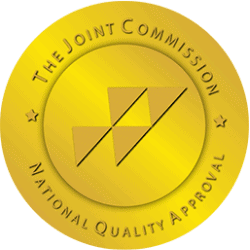Rehabilitation, commonly referred to as rehab, plays a crucial role in the journey towards overcoming addiction. However, a common question arises for those seeking help: how long does rehab take? Understanding the timeline of rehab and treatment is essential for individuals battling addiction, as well as their families and loved ones. This article delves into the various aspects of rehab duration, aiming to clarify what one can expect when entering treatment.
Defining Rehab and Its Purpose
Rehabilitation is a structured program designed to help individuals recover from substance use disorders or behavioral addictions. The primary goal of rehab is to provide necessary support and tools that facilitate recovery, ultimately leading to a healthier, more fulfilling life.
Rehab addresses not only the physical aspects of addiction, such as detoxification but also the psychological factors that contribute to dependency along with dual diagnosis cases. Through various therapies and support systems, individuals can learn to manage their cravings, cope with triggers, and rebuild their self-esteem. This multifaceted approach is crucial, as addiction often intertwines with underlying mental health issues, such as anxiety or depression, making it imperative to address both simultaneously for effective recovery.
The Role of Rehab in Addiction Recovery
The role of rehab in addiction recovery cannot be overstated. It serves as a foundation for individuals to regain control over their lives and break free from the cycle of addiction. Unlike attempts made to quit independently, rehab provides a supportive environment equipped with trained professionals, which significantly increases the likelihood of successful recovery. The structured nature of rehab programs helps individuals establish routines and set achievable goals, which are essential components in the journey toward sobriety.
Moreover, rehab fosters accountability among participants. Being in a structured setting allows individuals to confront their substance use issues while receiving guidance from counselors and peers who understand their struggles. This communal aspect can be incredibly beneficial in instilling a sense of belonging and motivation. Group therapy sessions, for instance, not only provide a platform for sharing experiences but also encourage individuals to learn from one another, fostering a sense of camaraderie that can be pivotal in maintaining long-term sobriety.
Factors Influencing Rehab Duration
How long rehab is can vary significantly based on multiple factors. Understanding these can help individuals set realistic expectations for their treatment journey.
The first factor influencing rehab duration is the severity and type of addiction. Individuals struggling with more severe dependencies or poly-substance abuse may require extended treatment periods to achieve sustainable recovery. Conversely, those with less severe issues might find that shorter programs are effective for their needs.
Different substances also impact treatment duration. For example, detoxing from alcohol or opioids may necessitate a longer stay in rehab compared to stimulants, due to potential withdrawal complications. The withdrawal symptoms associated with certain substances can be not only physically painful but also psychologically taxing, requiring a comprehensive approach that includes medical supervision and therapeutic support to manage effectively.
Another critical factor in determining rehab duration is an individual’s health and medical history. Pre-existing health issues — both physical and mental — can complicate the recovery process and may require additional treatment time.
In some cases, individuals may enter rehab needing medical attention for conditions associated with their substance use, while others may need concurrent treatment for mental health disorders. The complexity of each person’s situation directly affects how long they might need to stay in a rehab program. For instance, someone with a history of depression or anxiety may require integrated treatment strategies that address both their mental health and substance use, potentially extending their time in rehabilitation to ensure a holistic recovery approach.
Finally, the level of personal commitment and motivation plays a significant role in rehab duration. Individuals who are genuinely ready to change and are invested in their recovery often achieve better outcomes in shorter timeframes. In contrast, those who are ambivalent or resistant to treatment may take longer to engage fully.
A positive mindset and willingness to participate in various therapeutic methods can accelerate the recovery process, leading to a more effective treatment experience overall. Moreover, support systems outside of rehab, such as family involvement or peer support groups, can further enhance motivation and accountability, potentially shortening the duration of treatment. Engaging in aftercare programs and ongoing support can also play a crucial role in maintaining long-term sobriety, reinforcing the importance of a strong commitment to the recovery journey.
Common Duration of Different Rehab Programs
Each type of rehab program typically comes with its standard duration. Understanding these general timelines can help individuals make informed decisions regarding their treatment options.

The detoxification process is often the first step in the rehab journey and typically lasts from 3 to 10 days, depending on the substance being withdrawn from and the individual’s overall health. During this phase, medical supervision is crucial to ensure safety and manage withdrawal symptoms effectively.
In severe cases, detox can take longer, especially if multiple substances are involved. A healthcare provider can give a clearer timeline based on the individual’s unique circumstances. It is important to note that detox is not a standalone solution; rather, it serves as a foundation for further treatment. Many individuals experience a range of physical and psychological symptoms during detox, which can include anxiety, nausea, and cravings. Support from medical professionals and counselors can significantly ease this challenging phase, making it more manageable and less intimidating.
Inpatient rehab programs generally range from 28 days to 90 days or longer. The most common duration is 30 days, which offers a comprehensive approach to recovery. However, research indicates that longer stays can yield better outcomes for many individuals.
Our facility offers programs that last up to six months or more for those in need of extended support. The ideal duration often depends on the individual’s progress and ongoing needs, which are assessed regularly by treatment teams. Inpatient programs provide a structured environment that minimizes distractions and triggers, allowing individuals to focus entirely on their recovery. This immersive experience often includes a combination of individual therapy, group sessions, and holistic approaches, such as yoga or art therapy, which can enhance emotional healing and personal growth.
Outpatient rehab can vary widely in duration, typically ranging from 10 weeks to several months. The structure of outpatient programs allows participants to attend therapy sessions several times a week while keeping up with daily responsibilities.
Flexible schedules are intended to accommodate varying levels of addiction severity and individual commitments. As with inpatient programs, the precise duration will depend on personal progress and treatment goals. Outpatient rehab often emphasizes the importance of building a support network outside of the treatment environment.
Participants are encouraged to engage with family and friends, attend support groups, and develop coping strategies that will help them navigate the challenges of daily life. This ongoing support is crucial for maintaining long-term sobriety and preventing relapse, as individuals learn to integrate the skills they have acquired during treatment into their everyday routines.
Standard outpatient programs offer the most flexibility, often involving weekly therapy sessions that fit into an individual’s routine. These programs are well-suited for those with milder addiction issues or for individuals transitioning from more intensive treatment. They provide ongoing support and accountability, helping individuals stay on track with their recovery goals.
The Impact of Rehab Duration on Recovery Success
Understanding how the duration of rehab impacts long-term recovery flexibility is crucial for making informed decisions about treatment. Studies suggest that there is a significant correlation between the length of stay in rehab and the success of recovery outcomes.
Different Types of Rehab Programs
There are various types of rehab programs, each of which is offered at our serene facility at Ambrosia, each catering to different needs and circumstances. Here are some common formats:
- Inpatient Rehab: This program requires individuals to stay at the treatment facility full-time. It is ideal for those with severe addictions or co-occurring mental health issues.
- Outpatient Rehab: In this flexible format, individuals attend sessions while living at home. It is suitable for those with milder addictions or as a step-down option after inpatient treatment.
- Partial Hospitalization Programs (PHP): These programs provide intensive treatment during the day but allow individuals to return home in the evenings.
- Sober Living Homes: These are structured environments that provide transitional housing for individuals who have completed rehab but need ongoing support.
In addition to these traditional formats, there are also specialized programs that cater to specific populations or needs. For example, some rehab centers focus on treating young adults, women, or individuals with a history of trauma, tailoring their approaches to address the unique challenges faced by these groups. Holistic rehab programs may incorporate alternative therapies such as yoga, meditation, or art therapy, recognizing that recovery can be enhanced through creative expression and mindfulness practices.
This diversity in treatment options ensures that individuals can find a program that resonates with their personal experiences and recovery goals, ultimately increasing the chances of lasting success.
Getting the Help You Need at Ambrosia

The rehab center at Ambrosia in South Florida offers quality and comfortable treatment options for those struggling with drug addiction. A serene environment, matched with a team of dedicated experts, makes our programs some of the best in Florida. Don’t hesitate to reach out and learn more about all our treatment programs and options for you and your loved ones.



